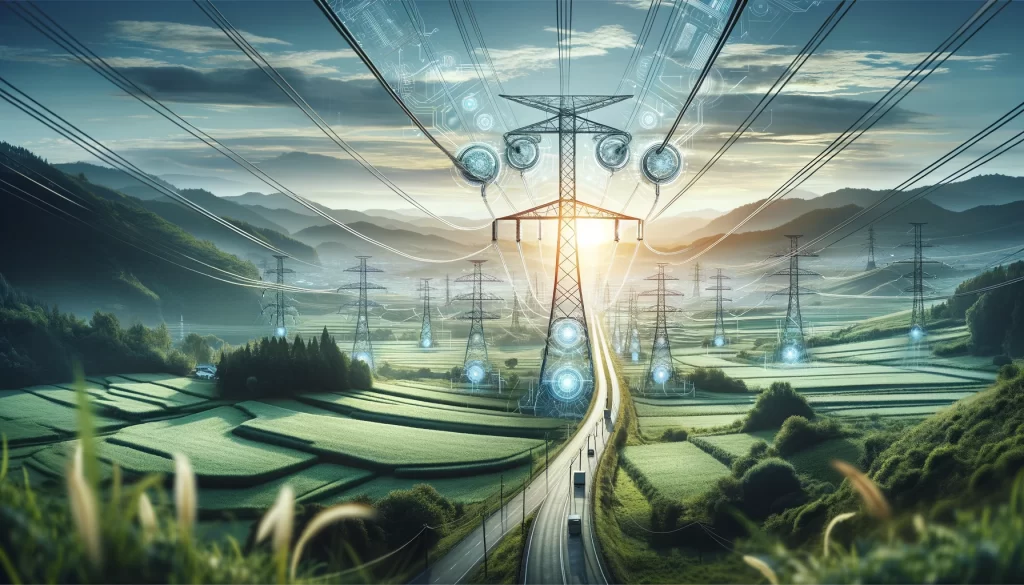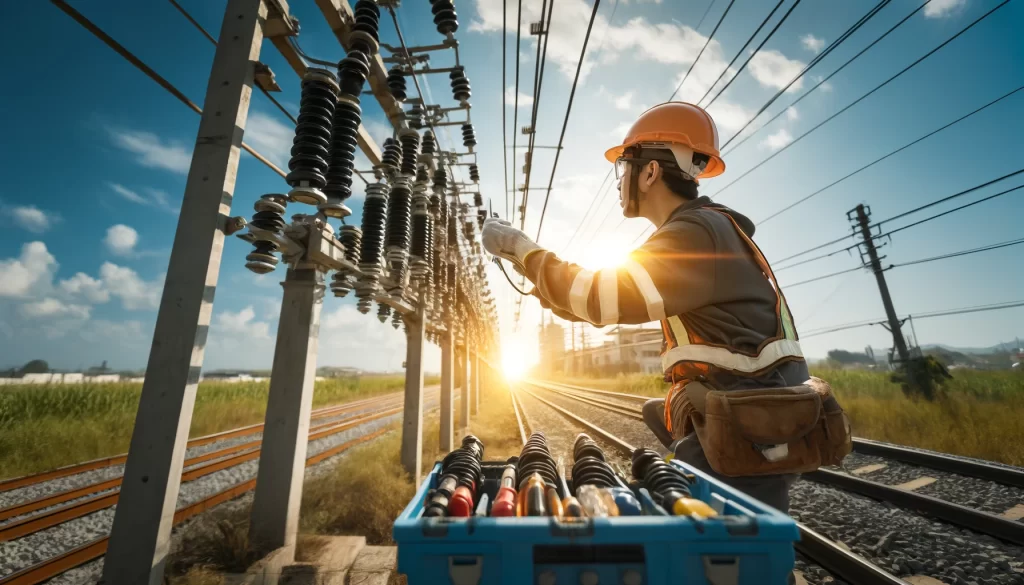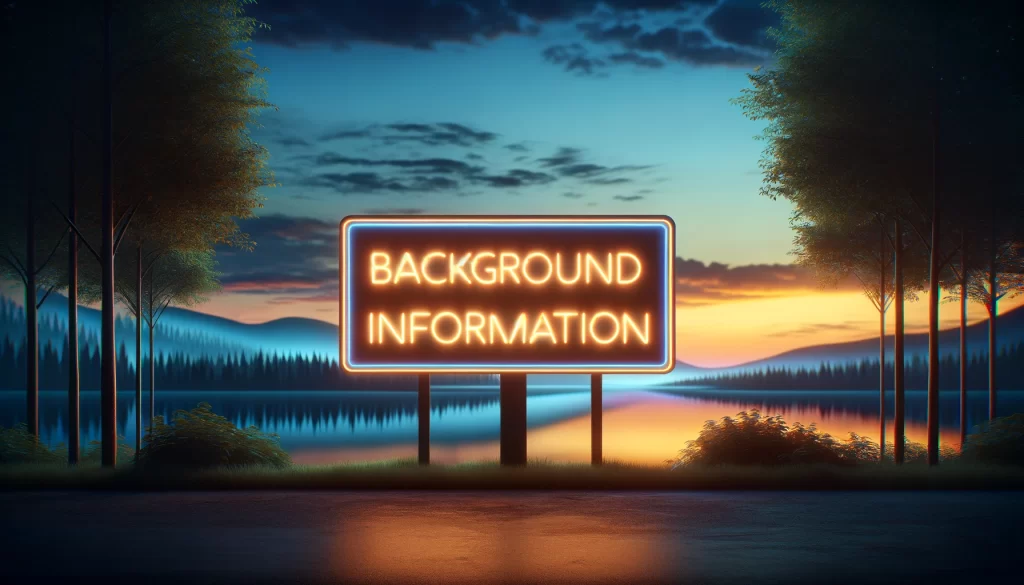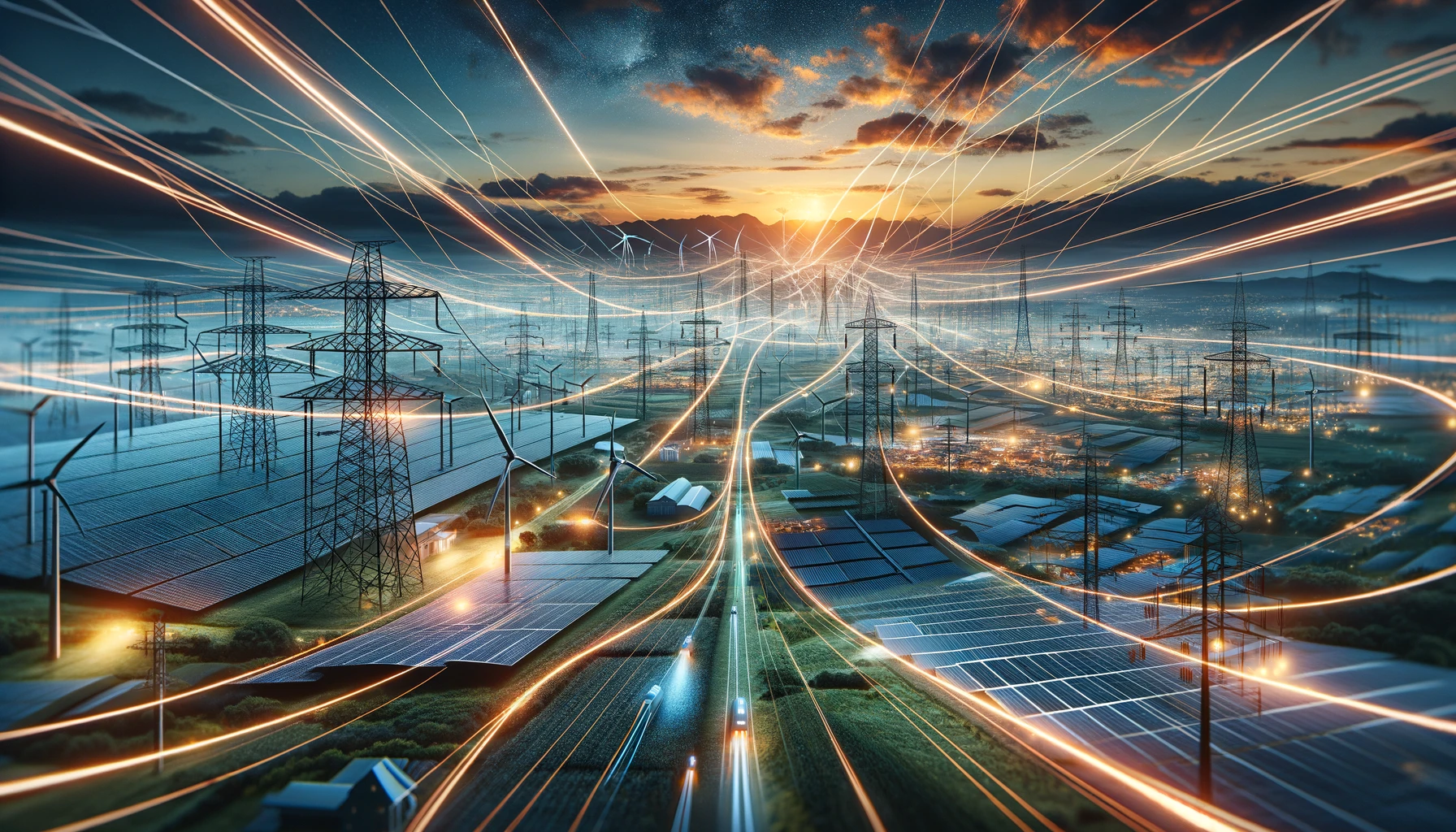In the quest to grow the use of clean energy across the United States, one big challenge has been the shortage of power lines. It’s not easy to set up new transmission lines; it can take over ten years because of delays in getting permission and resistance from local communities. However, a quicker and less expensive method might be on the horizon, as highlighted by two recent reports.
Imagine being able to double the electric grid’s capacity in many areas of the country by simply upgrading the existing power lines with cutting-edge materials. This would make it possible to generate a lot more power from the wind and the sun.
This approach, called “advanced reconductoring,” is something other countries have been doing for a while. But in the U.S., it’s not as common. Utilities are hesitant because they’re not as familiar with the new technology and they face regulatory and bureaucratic obstacles, the researchers discovered.
“We were pretty astonished by how big of an increase in capacity you can get by reconductoring,” said Amol Phadke, a senior scientist at the University of California, Berkeley, who was part of the team that released one of the reports. Along with GridLab, a consulting firm, and other researchers from Berkeley, they looked into the potential impact of adopting advanced reconductoring widely.
“It’s not the only thing we need to do to upgrade the grid, but it can be a major part of the solution,” Dr. Phadke mentioned.
Traditionally, power lines are made with a steel core surrounded by aluminum wires, a design that has been used for a hundred years. In the 2000s, some companies came up with new cables that use lighter materials like carbon fiber for the core, which allows for more aluminum to be packed in. These modern cables can handle up to twice as much electricity as the old ones.
For example, in 2011, AEP, a utility company in Texas, needed to increase its power supply to the Lower Rio Grande Valley quickly due to a population boom. Building new transmission lines would have taken too long. So, they opted to replace 240 miles of old wires with advanced conductors on an existing line, which took less than three years and boosted the line’s capacity by 40 percent.

Upgrading power lines with these advanced materials could almost double the capacity of existing transmission paths for less than half the cost of building new ones, the research suggests. If utility companies start using advanced conductors nationwide, they could quadruple the transmission capacity by 2035 compared to the current growth rate.
This would unlock the potential for a lot more solar and wind energy projects that are currently stalled because the local grids can’t handle more power.
However, there are still questions about how much wind and solar energy can actually be developed near the existing lines, according to Shinjini Menon, the vice president of asset management and wildfire safety at Southern California Edison, one of the biggest utilities in the country. It’s likely that new power lines will still be needed to connect to wind and sun-rich areas that are far away.
“We agree that advanced conductors are going to be very, very useful,” Ms. Menon said, noting that her company has already started several reconductoring projects in California. “But how far can we take it? The jury’s still out.”
Experts agree that slow progress in expanding the electric grid is a major bottleneck in moving towards cleaner energy sources. The Energy Department estimates that to achieve President Biden’s clean energy goals, the nation’s transmission lines network needs to grow by two-thirds or more by 2035.
But creating new transmission lines in the United States has turned into an incredibly tough process. It can take over ten years to plan and set up a new line across multiple areas, get approval from various agencies, and deal with legal challenges related to environmental or aesthetic concerns. Last year, the country managed to add just 251 miles of high-voltage transmission lines, continuing a decrease over the past ten years.
This slow progress comes at a critical time for the climate. In 2022, Congress set aside hundreds of billions of dollars for clean energy solutions like solar panels, wind turbines, and electric vehicles as part of the Inflation Reduction Act to combat global warming. However, if the U.S. can’t speed up adding new transmission capacity, it’s estimated that about half of the emission reductions expected from this law might not happen, according to research from the Princeton-led REPEAT Project.

Given the difficulty in building new lines, experts and industry leaders are looking into maximizing what the existing grid can do. This includes using “grid-enhancing technologies” like sensors that allow more power to flow through the current lines without overloading them, and advanced controls to reduce congestion. These strategies could boost the grid’s capacity by 10 to 30 percent at a minimal cost.
In Europe, countries like Belgium and the Netherlands are already making significant use of advanced conductors to bring more wind and solar power online, noted Emilia Chojkiewicz, one of the authors of the Berkeley report. “It’s often difficult to get new rights of way for lines, and reconductoring is much faster,” she said, explaining the enthusiasm for this method among transmission system planners in those countries.
So, why isn’t reconductoring more common in the U.S.? This question was at the heart of a second report by GridLab and Energy Innovation, a nonprofit organization. One major issue is the complexity of the American electricity system, which is split into three grids managed by over 3,200 utilities, with a wide array of planners and regulators. This fragmentation means that new technologies often take longer to be adopted here than in places with fewer grid operators.
Dave Bryant, CTO of CTC Global, a leading manufacturer of advanced conductors, pointed out that utilities often prefer building new lines over upgrading existing ones due to financial incentives. Additionally, the initial cost of advanced conductors can be off-putting for some regulators, despite their long-term savings. There’s also a lack of cooperation between utilities on planning for the future.
“We’re in an era where we need the grid to grow very quickly, and our existing processes haven’t caught up with that reality,” said Casey Baker from GridLab.
However, change is beginning to happen. In Montana, for example, Northwestern Energy upgraded an old line with advanced conductors to lower the risk of wildfires, and the state has passed legislation encouraging the use of this technology. Virginia is considering a similar bill.
As electricity demand rises due to new data centers, factories, and electric vehicles, creating more stress on the grid, utilities are becoming more open to new technologies.
Pedro Pizarro, president of Edison International and chairman of the Edison Electric Institute, highlighted the growing interest in grid-enhancing technologies. “There’s a sense of urgency,” he said.
This article is based on the following article:

Background Information
By understanding these concepts, readers can better appreciate the complexities involved in transitioning to clean energy and the innovative solutions being explored to overcome infrastructure challenges.
1. Clean Energy
Clean energy comes from renewable, zero-emissions sources that don’t deplete over time or harm the environment, unlike fossil fuels such as coal, oil, and natural gas. Examples include solar power (from the sun), wind power (from wind turbines), and hydroelectric power (from water). Clean energy is crucial for reducing greenhouse gas emissions, which contribute to global warming and climate change.
2. Electric Grid and Transmission Lines
The electric grid is a network of power stations, transmission lines, and distribution lines that deliver electricity from producers to consumers. Transmission lines are the high-voltage wires that carry electricity over long distances from power plants to areas where it’s needed. These lines are essential for distributing clean energy from remote renewable sources to cities and towns.
3. Grid Capacity
Grid capacity refers to the maximum amount of electricity that can be transmitted through the electric grid at one time. Increasing the grid’s capacity is essential for integrating more renewable energy, as it allows for more electricity to flow from clean energy sources to consumers.
4. Advanced Reconductoring
Advanced reconductoring involves replacing old, less efficient transmission lines with new, high-capacity lines made from advanced materials. This process can significantly increase the amount of electricity that can be transmitted without needing to build new lines and infrastructure, which is often costly and time-consuming.
5. Challenges in Expanding Transmission Lines
Expanding the grid by building new transmission lines faces several challenges:
- Permitting Delays: Getting approval from various government agencies and local communities can take years.
- Local Opposition: People may oppose new lines for fear they will ruin views, lower property values, or harm the environment.
- Environmental Concerns: New lines must be built in a way that minimizes damage to ecosystems and wildlife.
6. Grid-Enhancing Technologies
Besides advanced reconductoring, there are other technologies that can improve grid capacity and efficiency. These include sensors and controls that manage the flow of electricity more effectively, reducing congestion and allowing more power to be transmitted without overloading the system.
7. Legislation and Incentives
Government policies, such as financial incentives for using advanced conductors and mandates for renewable energy integration, play a crucial role in encouraging utilities to upgrade the grid. The article mentions specific legislation like the Inflation Reduction Act, which aims to support clean energy and reduce emissions.
Please subscribe to Insight Fortnight, our biweekly newsletter!
